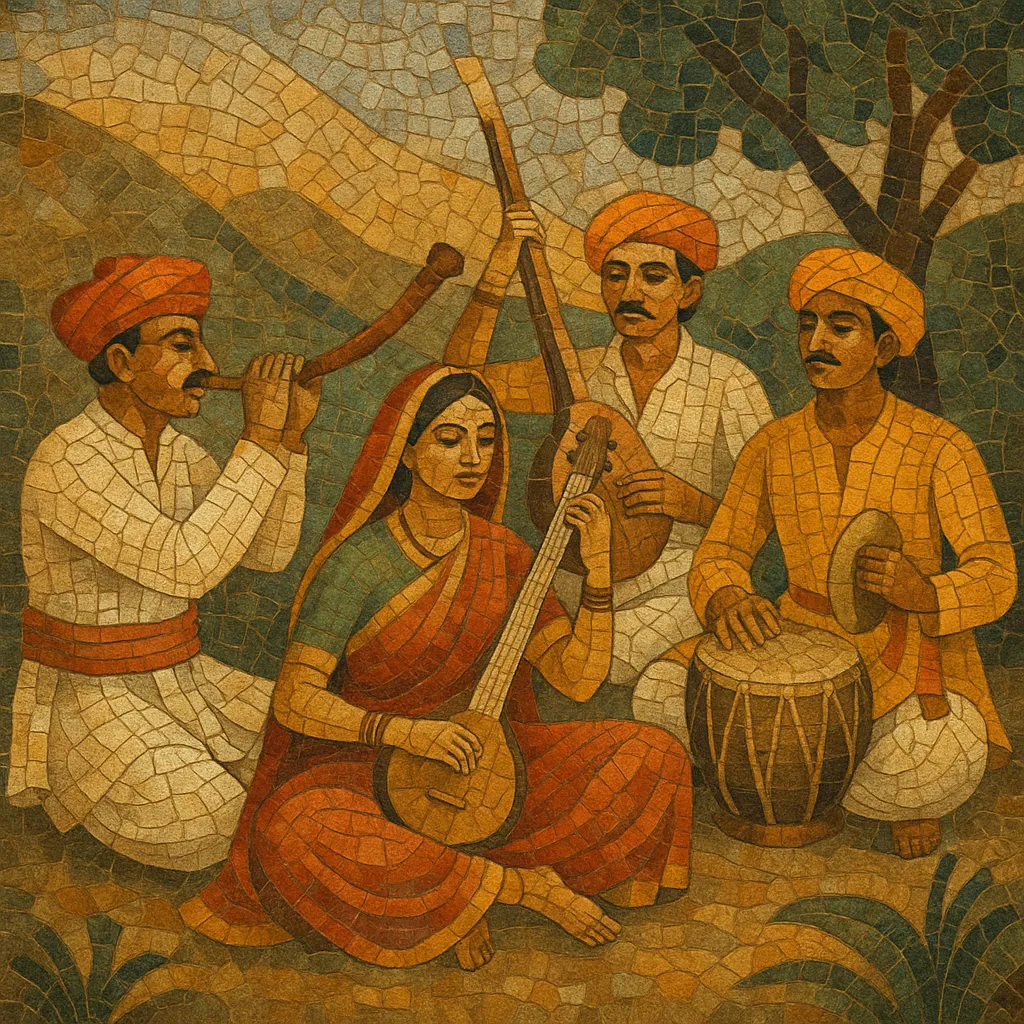Marathi folk music is the diverse body of vernacular song and performance traditions from Maharashtra, India. It encompasses devotional forms linked to the Varkari Bhakti movement (abhanga, ovi, kirtan), heroic ballads (powada), ritual music (gondhal), theatrical-dance styles (lavani within tamasha), fisherfolk songs (koli geet), and numerous occupational and seasonal songs.
Its sound world blends earthy percussion (dholki, tasha, halgi/sambal, lezim), drones and folk strings (ektara/tuntuna), reed and wind timbres (shehnai, tutari, pavri), and later additions such as harmonium and bansuri. Melodic material often references Hindustani ragas but is rendered with direct, colloquial delivery and strong rhythmic drive. Lyrics in Marathi range from intimate devotion to Vitthal of Pandharpur to romance, satire, social commentary, and oral history, making the tradition both sacred and celebratory.
Marathi folk music crystallized alongside the Varkari Bhakti movement. Poet-saints such as Sant Dnyaneshwar, Namdev, Eknath, and Tukaram popularized accessible devotional poetry (abhang and ovi), sung collectively on pilgrimages to Pandharpur. These songs married simple, memorable melodies with spiritual themes in the Marathi language, establishing an enduring participatory singing culture.
With the rise of the Maratha polity, shahirs (bard-singers) developed powada—martial narrative ballads celebrating figures like Chhatrapati Shivaji Maharaj. Performed with emphatic rhythms (dhol–tasha, halgi) and declamatory delivery, powadas spread news, inspired morale, and preserved history in oral form.
Lavani—sensual, witty, and rhythmically propulsive—flourished in tamasha folk theatre. Poets like Ram Joshi and Honaji Bala composed lavanis that used keherwa (8-beat) and dadra (6-beat) cycles on dholki, with spirited dance and expressive storytelling. Parallel ritual forms like gondhal, and occupational genres such as koli geet (fisherfolk) and work songs (bhaleri, ovi), enriched the regional mosaic.
The advent of recordings, radio (Akashvani), and Marathi theatre/film brought folk idioms to mass audiences. Lok shahirs (people’s bards) and iconic performers carried lavani, powada, and bhakti songs onto stages and screens. Films like Pinjra and later Natarang revived and reframed tamasha aesthetics for modern viewers.
Today, Marathi folk thrives in festivals (yatra), processions (dhol–tasha pathaks), devotional yatras, and staged productions. Artists and ensembles collaborate with Hindustani, pop, and film composers, while community traditions (Varkari kirtans, gondhal) continue to transmit repertoire. Digital platforms have further preserved archival recordings and inspired new hybrids.


